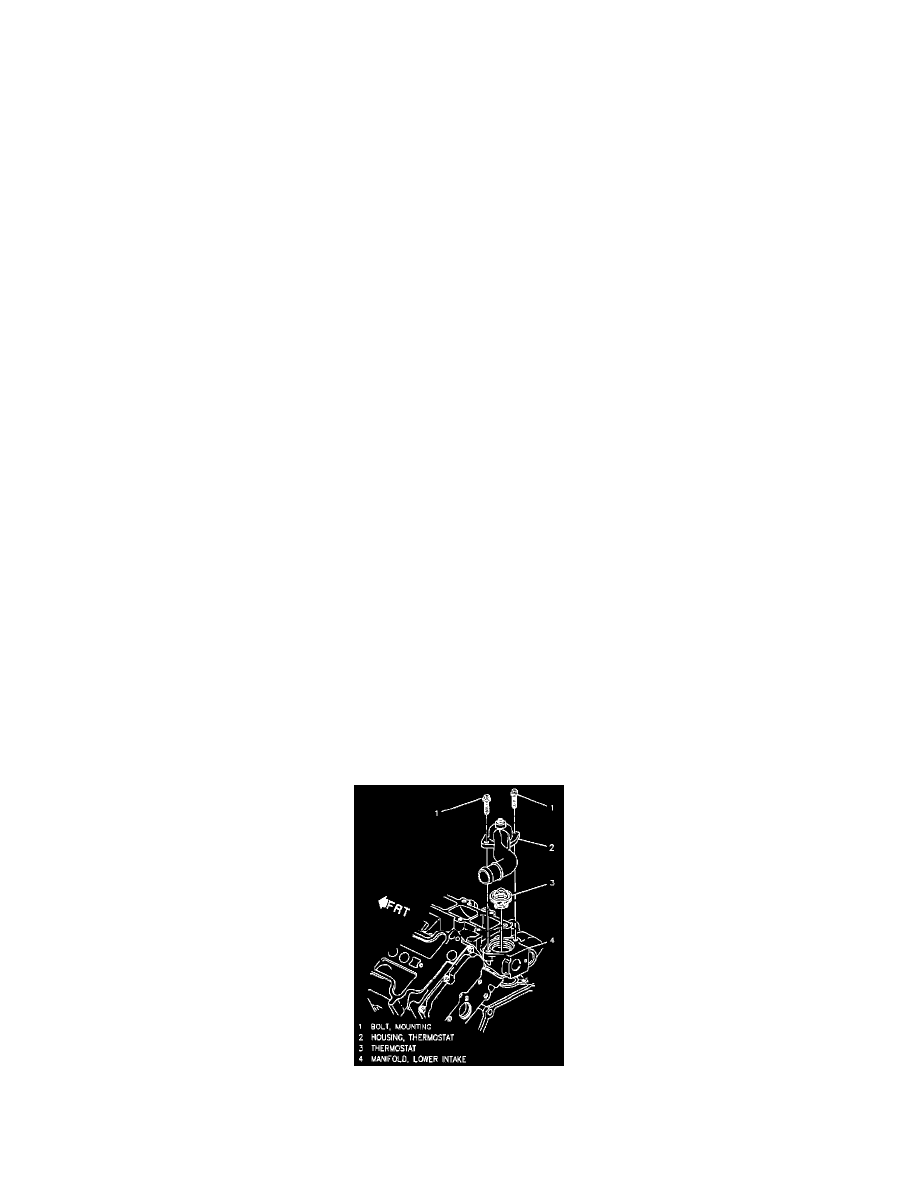Lumina V6-204 3.4L DOHC VIN X SFI (1996)

Coolant: Service and Repair
DRAINING AND REFILLING THE COOLING SYSTEM
Note: Ethylene glycol/Water fill ratios have been established to ensure a minimum of 50 percent Ethylene Glycol in the coolant mixture following the
recommended coolant flush, and drain procedure, and that all engine block drains and air bleeds were utilized.
The cooling system capacity is 10.9 liters (11.6 quarts). The coolant recovery reservoir capacity is 0.75 liters (0.8 quarts) to the "COLD" mark on the
reservoir. The quantities listed in the filling procedure include the additional quantity to displace the air remaining in the coolant system after a static
refill,
Using the correct fill ratio and the following procedures will ensure a minimum concentration of 50 percent Ethylene Glycol in the coolant system and
simplify the customer fill task. Refer to Figure for static fill radiator capacities. Every five years or 166,000km (100,000 miles) whichever first occurs,
the cooling system should be drained, and filled using the following recommended procedures.
NOTICE: When adding coolant, it is important that you use DEX - COOL (orange-colored, silicate-free) coolant meeting GM Specification 6277M. If
silicated coolant is added to the system, premature engine, heater core or radiator corrosion may result. In addition, the engine coolant will require
change sooner at 50,000km (30,000 miles) or 24 months.
Draining
Important: This procedure significantly increases the amount of used coolant and diluted hazardous waste.
CAUTION: As long as there is pressure in the coaling system, the temperature can be considerably higher than the boiling temperature of the solution
In radiator without causing the solution to boil. Removal of the radiator cap while engine Is hot and pressure is high will cause the solution to boll
instantaneously- possibly with explosive force - spewing the solution over engine, fenders and person removing cap. Under same conditions, the ethylene
glycol in engine coolant is combustible.
1. Park the vehicle on a level surface.
2. Remove and clean coolant recovery reservoir.
3. Remove the radiator cap when the engine is cool, by:
A. Slowly rotating the cap counterclockwise to detent. Do not press down while rotating pressure cap.
B. Wait until any residual pressure (indicated by a hissing sound) is relieved.
C. After all hissing stops, continue to rotate counterclockwise until the cap is removed.
Important: Recover coolant and store in a used coolant holding tank and submit the used coolant for recycling on a regular basis. This
procedure significantly increases the amount of used coolant and diluted hazardous waste.
4. Place drain pan under vehicle to collect all drained coolant.
5. Open the radiator drain valve located at the bottom of the radiator tank.
^
For procedures requiring the cooling system to be partially drained, opening the radiator drain valve should provide sufficient draining and no
further actions should be necessary.
6. Remove the thermostat housing cap and thermostat or open the air bleed vents. Open the air bleed vents on the thermostat housing and the heater
coolant inlet pipe by the master brake cylinder. The outlet air bleed vents should be opened two to three turns.
